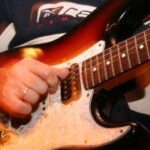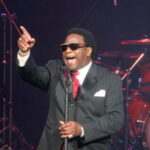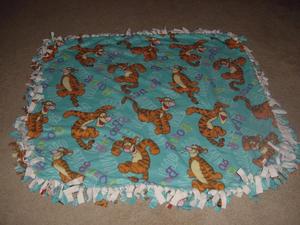The Melungeons: The Resurrection of a Proud People
N. Brent Kennedy with Robyn Vaughan Kennedy,The Melungeons: The Resurrection of a Proud People, An Untold Story of Ethnic Cleansing in America , (Mercer University Press, 1997), 180 pages, southern studies, $17.95 U.S.
As an Appalachian myself, I have always been interested in history and genealogy, especially that of my homeland. So when I read the essay Appalachian Americans: the Invisible Minority by Everett Sizemore (http://www.associatedcontent.com/article/8611/appalachian_americans_the_invisible.html) and noticed in one of Sizemore’s appendixes to the essay a reference to a people called the Melungeons, I wanted to find out more. A trip to a regional library yielded this book: an amateurish attempt to explain through the Kennedy genealogy who and how the Appalachian people as we know them today are.
This book was published in 1997 when research on the Melungeons (known as “Melogeons” in Elkhorn City, KY where the majority of my family comes from) was just gaining substantial momentum. Much was still merely conjecture and circumstantial at this early phase. Newer books on the subject may contain more accurate and more convincing evidence to support current theories. Still, Kennedy’s work is truly a labor of love and if anything it rouses the curiosity. Does your family history contain conflicting or even missing family legends? Do members of your family suffer from rare Mediterranean diseases? Are the physical traits of your family not always in keeping with the Anglo-American norm? You may have Melungeon blood in your veins.
This book paints a picture of American history that is very different than the textbook history we are taught in school. It paints a picture of a much more varied and complicated nature. The Melungeons themselves claim variously to have come from the survivors of the “Lost Colony”, to be survivors of the ill-fated Santa Elena settlement and its satellite forts, to be descendent from Iberian and Middle Eastern slaves abandoned on the Carolinas’ shores, to be the result of extensive intermarriages with the Powhattan, Pamunkey, and Cherokee tribes of Native Americans, to be descendants of the otherwise unknown “Croatan” Indians, to be “Portygee”, and several other origins. Not a few claim more than one of these heritages. Kennedy argues that they may in fact all be true.
There is evidence to suggest that the Middle Eastern influence was already present among the eastern seaboard tribes of Native Americans long before Columbus arrived on America’s shores. There even appear to be direct linguistic borrowings, especially from the Croatian language (the Croatian people would have been a part of the Turkish-Ottoman Empire at the time). By the time northern European immigrants began arriving (such as Scotch-Irish, German, English, etc.) there was already a sizable population who called themselves Melungeons (from Arabic words of nearly the same pronunciation which meant “accursed people”).
These Melungeons occupied desirable land that the new arrivals coveted and so were dispossessed and forced to retreat further and further into the Appalachian Mountains to survive. When the first national census was taken in the 1790s, northern Europeans either sought to make their job simpler or took advantage of miscegenation laws of the time by listing these people first as “free persons of color”- thus stripping them of all rights to land, education, etc. – and later listing them variously as negro, Indian, or free persons of color. This created a situation which marginalised the Melungeons, and made it perfectly legal to fleece them. As the situation worsened, the Melungeon population retreated to the most isolated areas, and began to destroy their past. To be Indian was preferable to being free persons of color, so many began making false histories for themselves or claimed a higher percentage of Indian ancestry than they actually possessed. Those fortunate enough to be fairer-skinned claimed various northern European heritages and avoided the sun which would darken the skin and reveal the lie. These ones eventually escaped what had then become the undesirable designation “Melungeon”. Every generation wiped out the generation before, even going so far as to burn photographs in some cases. Those whose darker complexions would not allow them to escape prejudice lived until very recently in abject poverty.
As a result, a large portion of Appalachians are actually Melungeons who may not have even heard of the term. Some tell-tale physical signs are olive, copper-tinted or reddish complexions that darken considerably when exposed to the sun, dark, auburn, or reddish hair that is straight or wavy and usually coarse, and brown or blue eyes that are sometimes so light they are nearly white. The women are usually very beautiful and strong featured. Abraham Lincoln may have been a Melungeon as well as Elvis Presley.
All of this argues that the Appalachians, themselves a historically oppressed and marginalised people, are descendants of other such peoples, and have a heritage much more complex than formerly thought. Some have suggested that this new research makes a stronger argument in favour of the notion that the Appalachian people are a race and culture all unto their own. While that is still a matter of some debate it is certain that they are unique, a true mixture of peoples and cultures blended over the course of four or more centuries into something utterly beautiful.
Research continues, as Kennedy is quick to repeatedly point out, and the theories and conjectures he presented may have changed as new information comes to light and may continue to change. If you are interested in learning more, read this and other related books and contact the Melungeon Research Committee (www.melungeons.com).




